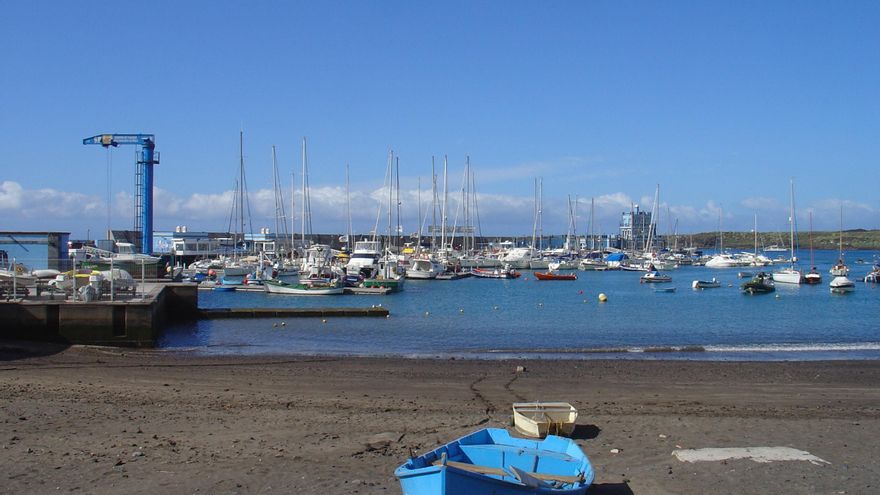Las Galletas: The Mystery Behind the Name

In this coastal corner of Arona lies a rather unassuming name, the origin of which remains uncertain: Las Galletas.
Hardtack from a ship? Provisions lost in a shipwreck? It sounds tempting to create a nautical legend, but philology offers a less romantic explanation.
The Canary Academy of Language (ACL) acknowledges that there is no definitive document to settle the matter. Nonetheless, there are strong indicators to debunk myths and propose a plausible explanation.
Few Certainties
The ACL suggests that the most likely explanation is derived from the Portuguese term calheta, meaning “cove” or “narrow inlet”. This term aligns with the geography of the area: a small, sheltered bay, ideal for landings and fishing activities.
The form calheta could have adapted in Spanish to galleta/galletas, by replacing the initial consonant /k/ with /g/ (a common occurrence in loanwords during voicing) and transforming the Portuguese /ʎ/ into the Spanish digraph “ll”.
The final leap to “Las Galletas” is completed with the plural article typical of island toponymy (“Las Caletillas”, “Los Cristianos”, “Las Chafiras”, etc.).
Already Appearing in the 16th Century
The repartimientos (documents in which the Castilian conquerors distributed land following the conquest of Tenerife) mention the place name in the early 16th century.
These deeds, recorded in protocols, letters of allocation, and account books, provide a wealth of information about the real toponymy of the time as they describe boundaries, ravines, watering holes, caves, and threshing floors.
In 1516 and 1522, there are references to lands “near Las Galletas” or the “ravine of Las Galletas”. This evidence shows that the name was already established barely two decades after the conquest, dispelling the idea that it is a modern invention or a tourist nickname.
Moreover, the coastline of Arona and San Miguel de Abona is filled with geographic nicknames that name beaches, headlands, and ravines based on their shape or usage: Los Abrigos (docks), La Tejita (possibly referring to lava earthenware or salt tiles), Las Galletas… Within this descriptive naming system, a word meaning “small cove” fits better than an isolated shipwreck episode.
What the Legend Says
- The Ship of the Biscuits: The legend claims that a ship laden with marine biscuits ran aground in the area, leaving the beach strewn with cakes. It’s a captivating anecdote, perfect for a brochure, but there are no documents to support it. Neither chroniclers, nor repartimientos, nor notarial protocols record this alleged “biscuity” shipwreck.
- The Culinary Derivation: Biscuit = Hardtack: It is true that “galleta” has existed in Spanish since the Middle Ages, and that ship’s biscuits (hard food for long voyages) were common in Atlantic navigation. However, mere lexical coincidence is insufficient to justify a toponym, particularly when a more coherent toponym (calheta) and early documentation not mentioning the food are present.
- The French Route: galette = Pebble: Some popular works refer to the French galette (“flat bread,” but also “flat stone” in regional slang) as the origin. However, the French presence in Tenerife in the 16th century was much less significant than the Portuguese, and again, there is no evidence in official texts. The ACL itself notes that this theory lacks academic support.
All Roads Lead to Portugal
Although Tenerife was conquered by the Crown of Castile, the Portuguese presence in the Canary Islands was significant, which led to the Canary lexicon being enriched with Lusitanisms, including in toponymy.
In Madeira and the Azores, the terms Calheta/Calhetas are common as coastal microtoponyms, making it entirely plausible to translate the name into Spanish for a location with similar characteristics.
Additionally, the plural with article (Las Galletas) follows the pattern found in numerous Canary and mainland toponyms (Las Caldas, Las Ventas, Las Negras…).
A Tourist Destination
Las Galletas (Arona, southern Tenerife) retains its essence as a fishing village and serves as a “gateway to the sea” for those seeking a local atmosphere, an urban beach, and nautical excursions. Its small Playa de Las Galletas features a mix of pebbles and dark volcanic sand, with a front line seamlessly integrated into the urban area, alongside the fish market and traditional pier.
Just a step away from the sand lies Marina del Sur–Las Galletas, a marina and fishing port that currently plays a significant role in the tourist offering.
It boasts 176 berths (up to 20m in length), boatyard services, and companies organising boat trips, whale watching, and activities such as jet skiing or chartering, while also serving as a diving base for renowned spots like Montaña Amarilla, Palm-Mar Cave, or the wreck of El Condesito.
All of this takes place in the protected surroundings of Malpaís de La Rasca, and very close to the neighbouring tourist enclave of Costa del Silencio and Ten-Bel, which was once one of the most sought-after summer destinations in Tenerife.












